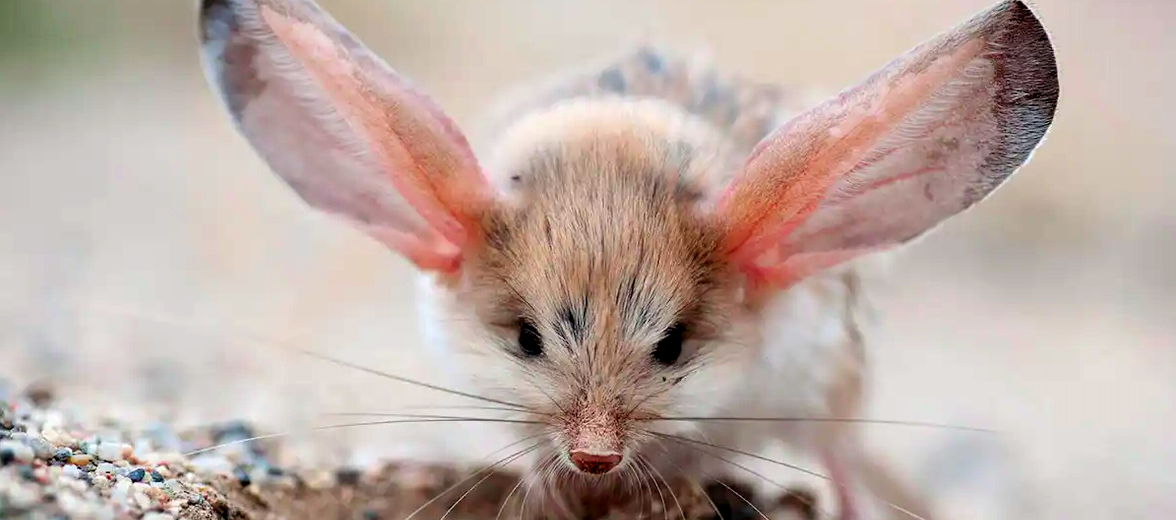
Hailing from China and Mongolia, and looking like a kangaroo rat with supersized ears, it’s the long-eared jerboa. They like desert habitats, with a preference for low shrub cover and sandy river basins. These tiny critters are listed as Least Concern by the IUCN. But their actual numbers are unknown, as the region in which they live is challenging to study them.
First the Stats…
Scientific name: Euchoreutes naso
Weight: Up to 1.3 ounces
Length: Up to 3.5 inches, plus a 6.3 inch tail
Lifespan: Up to 3 years
Now on to the Facts!
1.) Long-eared jerboas are nocturnal (active at night).
2.) They are also solitary, only coming together to mate.
3.) These creatures use their large ears to keep them cool, via thermoregulation (regulation of body heat).
4.) The hair in their ears as well as the flap of skin on their nose helps prevent sand from getting into places where sand shouldn’t be.
5.) They use their superb senses of smell and hearing to help detect predators.
But wait, there’s more on the long-eared jerboa!
6.) Cats, foxes, snakes, and owls all prey on jerboas.
7.) These diminutive critters can reach hopping speeds of up to 15 mph!
Did you know…?
A long-eared jerboa can jump up to 9.8 feet!
8.) They hibernate in the winter.
9.) Long-eared jerboas are insectivores, eating primarily flying insects.
10.) After up to a 35 day gestation (pregnancy) females will birth up to 6 pups.
But wait, there’s still more on the long-eared jerboa!
11.) They communicate via vibrations and chemically, by dust bathing.
12.) These little critters are cute as heck, but give up any notion of having one as a pet. They can be carriers of monkey pox, and you don’t want that in your life.
Did you know…?
Jerboas were the symbol for Britain’s 7th Armored Brigade, aka the “The Desert Rats”.
13.) The jerboa gets most, if not all, of their water from the food they eat.
14.) They catch flying insects by jumping in the air and catching them in mid flight.
Now a Short Long-Eared Jerboa Video!
Be sure to share & comment below! Also, check out the Critter Science YouTube channel. Videos added frequently!
Want to suggest a critter for me to write about? Let me know here.



